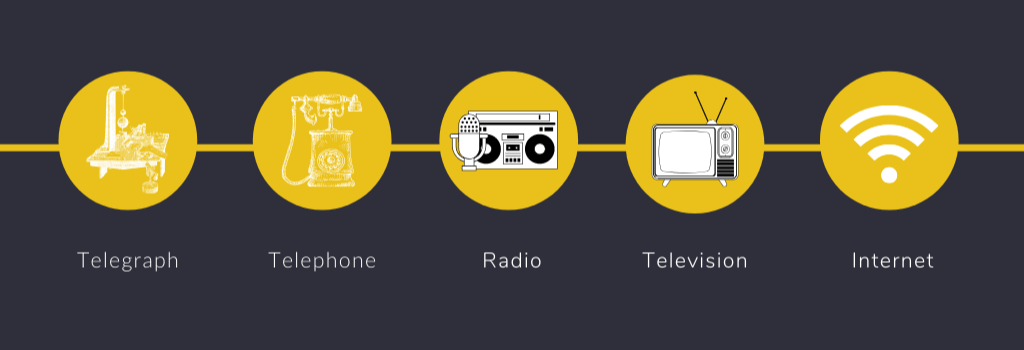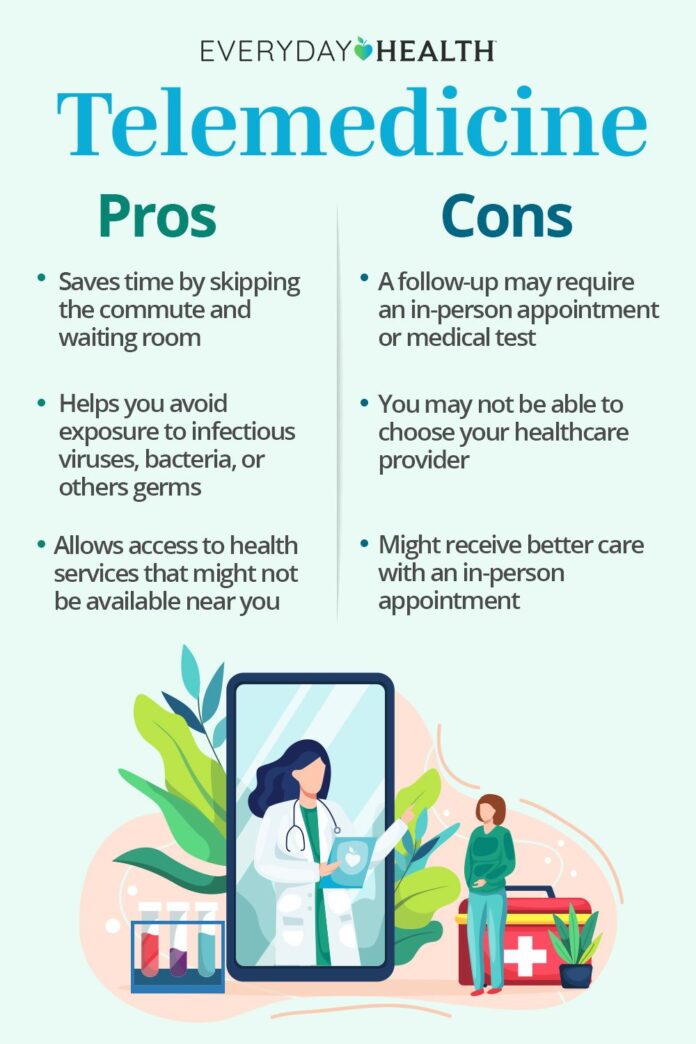The Evolution of Telemedicine in Healthcare
Unlocking Healthcare Access

Title: “Unlocking Healthcare Access: The Rise of Telemedicine”
The Genesis of Telemedicine:
To understand the significance of telemedicine, we first delve into its origins. Telemedicine, a convergence of telecommunications and healthcare, emerged as a solution to bridge the gap between patients and healthcare providers, particularly in remote or underserved areas. The initial stages of telemedicine were marked by simple telephone consultations, laying the groundwork for the sophisticated virtual healthcare services we witness today.
The Evolutionary Leap:
As technology advanced, so did telemedicine. The integration of video conferencing, real-time data sharing, and remote monitoring elevated telemedicine to new heights. Now, patients can connect with healthcare professionals seamlessly, breaking free from the constraints of physical proximity. This evolution has not only enhanced accessibility but has also transformed the very nature of doctor-patient interactions.
Breaking Down Barriers:
Telemedicine has become a catalyst for breaking down barriers that traditionally hindered healthcare access. Geographic distances, transportation challenges, and even time constraints are no longer insurmountable obstacles. Whether it’s a routine check-up, a follow-up consultation, or even mental health support, telemedicine empowers individuals to prioritize their health without the limitations of conventional healthcare models.
Advantages of Telemedicine:
The advantages of telemedicine are multifaceted. For patients, it means greater convenience, reduced travel expenses, and timely access to medical expertise. Healthcare providers benefit from increased efficiency, the ability to reach a broader patient base, and improved patient engagement. Moreover, telemedicine plays a pivotal role in preventive care, enabling proactive health management.
Challenges and Ethical Considerations:
Despite its numerous benefits, telemedicine is not without challenges. Ensuring data security, addressing disparities in technology access, and navigating licensure issues are crucial considerations. Moreover, the ethical implications of remote healthcare provision require careful examination. Striking a balance between technology-driven efficiency and maintaining the human touch in healthcare is an ongoing conversation within the telemedicine sphere.
Looking Ahead:
In the subsequent sections of this blog series, we will explore specific applications of telemedicine, delve into real-world success stories, and envision the future landscape of healthcare with telemedicine at its core. As we unravel the layers of this transformative approach, it becomes evident that telemedicine is not merely a trend but a paradigm shift that has the potential to redefine how we perceive and experience healthcare.
Join us on this enlightening journey as we unlock the doors to a new era in healthcare, where distance is no longer a barrier to receiving the quality medical care every individual deserves. Welcome to the world of telemedicine – where healthcare meets innovation, and accessibility knows no bounds.

2 Historical perspectives and their growth
Title: “Navigating Telemedicine’s Timeline: From Historical Roots to Unprecedented Expansion”
As we embark on a journey through the annals of medical history, it becomes evident that the roots of telemedicine stretch far beyond our contemporary digital age. The concept of remotely accessing medical expertise has witnessed a fascinating evolution, with each era contributing to the growth and refinement of what we now recognize as telemedicine.
Ancient Roots:
The origins of telemedicine can be traced back to ancient times when written communications served as the primary mode of seeking medical advice. Scrolls containing descriptions of symptoms and inquiries were sent to distant healers, marking an early form of remote consultation.
Early Technological Advancements:
The telegraph, introduced in the 19th century, played a pivotal role in laying the groundwork for telemedical communication. Physicians could share information across distances, enabling collaboration on complex cases. However, these early attempts were constrained by the limitations of technology at the time.
Radio and Telephone Era:
The 20th century witnessed significant strides in telecommunication. The radio allowed for medical consultations to be broadcast, reaching a wider audience. The telephone further revolutionized remote communication, facilitating direct conversations between patients and healthcare professionals. While these technologies improved access, they still lacked the visual component essential for comprehensive medical assessments.
Video Conferencing Emerges:
The late 20th century marked a paradigm shift with the advent of video conferencing technology. This breakthrough allowed for more immersive telemedical consultations, bridging the visual gap and providing a more comprehensive understanding of patients’ conditions. The growth of the internet further accelerated the integration of video into telemedicine practices.
Digital Revolution:
The 21st century brought about an unprecedented digital revolution, propelling telemedicine into a new era. With the ubiquity of smartphones, high-speed internet, and advanced medical devices, patients could now connect with healthcare providers from the comfort of their homes. The growth of electronic health records (EHRs) streamlined information sharing, enhancing the efficiency of remote consultations.
The Expanding Landscape:
In recent years, telemedicine has seen remarkable growth, driven by factors such as the COVID-19 pandemic, which underscored the importance of remote healthcare access. The acceptance of telemedicine by both patients and healthcare professionals has soared, leading to a surge in telehealth platforms and services.
Challenges and Opportunities:
While the historical journey of telemedicine is marked by progress, it is not without challenges. Regulatory issues, data security concerns, and the need for standardization are ongoing considerations. However, these challenges are met with a landscape of immense opportunities to redefine healthcare accessibility, especially for those in remote or underserved areas.
Conclusion:
As we reflect on the historical perspective and growth of telemedicine, it is clear that what began as a rudimentary exchange of written messages has evolved into a sophisticated, technology-driven approach to healthcare. The journey from ancient scrolls to real-time video consultations is a testament to human innovation and our relentless pursuit of overcoming barriers to healthcare access. In the upcoming sections of this blog series, we will delve deeper into the applications, advantages, and future possibilities of telemedicine, exploring how this historical journey has set the stage for a new era in healthcare delivery. Join us as we navigate the fascinating landscape of telemedicine’s past, present, and future.

3 Advantages and challenges
Title: “Telemedicine Unveiled: Navigating Advantages and Confronting Challenges”
Introduction:
In the realm of modern healthcare, telemedicine stands as a beacon of innovation, promising enhanced accessibility and convenience for both patients and healthcare providers. As we explore the multifaceted landscape of telemedicine, it’s essential to scrutinize the advantages it brings to the table, while also acknowledging and addressing the challenges that come with this transformative approach.
Advantages of Telemedicine:
- Enhanced Accessibility:
– Telemedicine transcends geographical barriers, ensuring that individuals in remote or underserved areas can access healthcare services without the constraints of distance.
- Convenience and Time Savings:
– Patients no longer need to endure long commutes or wait times. Telemedicine allows for timely consultations from the comfort of one’s home, reducing the burden of travel.
- Improved Patient Engagement:
– Telemedicine fosters regular and timely communication between patients and healthcare providers, leading to increased engagement in managing their health.
- Efficient Use of Resources:
– Healthcare facilities can optimize their resources more effectively, as telemedicine enables streamlined workflows and reduces the strain on physical infrastructure.
- Cost Savings:
– Both patients and healthcare providers can experience financial benefits. Patients save on travel expenses, while providers can achieve cost efficiencies in delivering certain types of care remotely.
- Proactive Healthcare Management:
– Telemedicine facilitates ongoing monitoring of chronic conditions, allowing for proactive interventions and preventing the escalation of health issues.
Challenges of Telemedicine:
- Technology Barriers:
– Not everyone has access to the necessary technology for virtual consultations. Addressing disparities in technology access is crucial to ensuring equitable healthcare.
- Data Security Concerns:
– The transmission and storage of sensitive health data raise concerns about privacy and security. Rigorous measures are necessary to safeguard patient information.
- Licensing and Regulatory Challenges:
– Telemedicine often involves the crossing of state or national borders, posing challenges related to licensing and varying regulations. Harmonizing these aspects is essential.
- Loss of In-Person Interaction:
– While telemedicine offers convenience, it may lack the personal touch of in-person consultations. Building and maintaining a strong doctor-patient relationship in a virtual setting is a challenge.
- Diagnostic Limitations:
– Certain medical examinations and diagnostic procedures require physical presence. Telemedicine may face limitations in providing a comprehensive assessment in such cases.
- Resistance to Change:
– Both patients and healthcare professionals may exhibit resistance to adopting telemedicine due to traditional perceptions of healthcare delivery. Overcoming this resistance requires education and awareness.
Balancing Act for the Future:
As we navigate the landscape of telemedicine, it becomes evident that realizing its full potential requires a delicate balance between leveraging its advantages and addressing the challenges it presents. In the subsequent sections of this blog series, we will delve into specific applications of telemedicine, real-world success stories, and the ethical considerations that accompany this transformative approach. Join us as we unravel the complexities of telemedicine, aiming for a future where healthcare is not only advanced but also accessible to all.

4 Impact on patient care
Title: “Transforming Patient Care: The Unparalleled Impact of Telemedicine”
Introduction:
In the ever-evolving tapestry of healthcare, telemedicine emerges as a transformative thread, weaving its way into the fabric of patient care. This blog explores the profound impact of telemedicine on the patient experience, examining how this revolutionary approach is redefining the dynamics of healthcare delivery.
Empowering Patient Access:
Telemedicine is a key catalyst in dismantling barriers to healthcare access. Patients, regardless of their geographical location, can now connect with healthcare professionals in real-time. This newfound accessibility ensures that individuals in remote or underserved areas receive timely medical attention, breaking down the traditional constraints of distance.
Timely Interventions and Proactive Management:
One of the standout advantages of telemedicine is its ability to facilitate timely interventions and proactive healthcare management. Patients with chronic conditions, for instance, can benefit from continuous monitoring and virtual check-ins, allowing for early detection of potential issues and prompt adjustments to treatment plans. This shift from reactive to proactive care is pivotal in improving patient outcomes.
Enhanced Patient Engagement:
Telemedicine fosters a more engaged and empowered patient population. This increased interaction not only strengthens the doctor-patient relationship but also promotes active participation in one’s healthcare journey.
Reduction of Healthcare Disparities:
By offering healthcare services beyond traditional physical boundaries, telemedicine plays a pivotal role in reducing disparities in healthcare access. Vulnerable populations, including those in rural or economically challenged areas, now have the opportunity to receive quality care without the burdensome challenges of travel and logistics.
Personalized and Holistic Care:
Telemedicine allows for a more personalized and holistic approach to patient care. Healthcare providers can gain insights into the patient’s daily life and environment through virtual interactions, enabling a more comprehensive understanding of their health context. This, in turn, contributes to tailored treatment plans that align with individual needs.
Optimizing Healthcare Resources:
The integration of telemedicine optimizes healthcare resources by streamlining workflows and reducing the strain on physical infrastructure. This efficiency not only benefits healthcare providers but also contributes to cost savings, making healthcare delivery more sustainable in the long run.
Patient-Centered Care in a Virtual Realm:
While the impact of telemedicine on patient care is undeniable, it’s essential to navigate the challenges and ethical considerations associated with this virtual shift. Striking a balance between technology-driven efficiency and maintaining the human touch in healthcare remains a crucial endeavor.
Conclusion:
As we traverse the landscape of telemedicine’s impact on patient care, it becomes evident that this paradigm shift is not merely a trend but a seismic transformation in the way healthcare is delivered and experienced. Join us in the subsequent sections of this blog series as we delve into specific applications, success stories, and the ethical considerations that accompany the era of telemedicine. Together, let’s unravel the layers of this healthcare revolution and envision a future where patient-centric care knows no bounds.
5 Future trends and possibilities
Title: “Beyond Boundaries: Unveiling Future Trends and Possibilities in Telemedicine”
Introduction:
As we stand on the cusp of a new era in healthcare, telemedicine emerges as a beacon of innovation, continuously pushing the boundaries of what is possible. In this blog, we embark on a journey into the future, exploring the evolving trends and untapped possibilities that promise to reshape the landscape of telemedicine and redefine the way we perceive and experience healthcare.
- Artificial Intelligence Integration:
– Automated Diagnostics:
– AI algorithms are poised to enhance diagnostic capabilities, analyzing medical data with unprecedented speed and accuracy, leading to quicker and more reliable diagnoses.
– Personalized Treatment Plans:
– AI-driven insights into patient data can contribute to the development of highly personalized treatment plans, optimizing outcomes and minimizing adverse effects.
- Virtual Reality (VR) and Augmented Reality (AR) in Telemedicine:
– Immersive Virtual Consultations:
– VR and AR technologies can transform virtual consultations into immersive experiences, allowing healthcare providers to visualize and explain complex medical conditions more effectively.
– Training and Simulation:
– Healthcare professionals can benefit from VR and AR simulations for training and practicing medical procedures in a virtual environment, enhancing their skills and confidence.
- Wearable Technology Advancements:
– Continuous Monitoring:
– Wearable devices are evolving to provide real-time health data, enabling continuous monitoring of vital signs and early detection of health issues.
– Integration with Telemedicine Platforms:
– Seamless integration of wearable technology with telemedicine platforms allows for a more comprehensive understanding of patients’ health, facilitating proactive interventions.
- 5G Connectivity Revolution:
– High-Speed Data Transmission:
– The widespread adoption of 5G technology ensures faster and more reliable data transmission, facilitating high-quality video consultations and real-time data exchange.
– Remote Surgical Procedures:
– The low latency of 5G opens the door to remote surgical procedures, where surgeons can operate on patients located in different geographical locations with minimal delay.
- Expansion of Remote Monitoring and Home-based Care:
– Chronic Disease Management:
– Telemedicine will play a pivotal role in the remote monitoring and management of chronic diseases, empowering patients to actively participate in their care from the comfort of their homes.
– Postoperative and Post-Discharge Care:
– Patients recovering from surgeries or hospitalizations can receive follow-up care through telemedicine, reducing the need for frequent hospital visits and improving overall recovery experiences.
- Global Collaborations and Second Opinion Services:
– International Consultations:
– Telemedicine facilitates cross-border collaborations, enabling patients to seek expert opinions from healthcare professionals around the globe without the need for extensive travel.
– Multidisciplinary Teams:
– Virtual platforms allow for the creation of multidisciplinary teams that can collaborate on complex cases, bringing together specialists from different fields to provide comprehensive care.
Conclusion:
As we peer into the future of telemedicine, the possibilities are as vast as the ever-expanding digital landscape. From the integration of cutting-edge technologies to the democratization of healthcare on a global scale, telemedicine is poised to transcend current boundaries. Join us in the upcoming sections of this blog series as we delve deeper into specific applications, success stories, and the ethical considerations that accompany the exciting future of telemedicine. Together, let’s embrace a healthcare paradigm where innovation knows no limits and quality care is accessible to all.
6 Conclusion
Title: “Telemedicine: A Revolution Beyond Borders”
Introduction:
As we draw the curtains on our exploration into the world of telemedicine, it’s evident that we stand at the precipice of a healthcare revolution. This transformative journey, marked by historical roots, present advancements, and future possibilities, has illuminated the extraordinary potential of telemedicine in reshaping the very fabric of patient care. In this concluding chapter, let’s reflect on the key insights gained and the profound impact telemedicine is poised to have on the future of healthcare.
A Historical Odyssey:
Our journey commenced with a glimpse into the historical roots of telemedicine, tracing its evolution from ancient written consultations to the sophisticated digital platforms of today. The telegraph, telephone, and video conferencing all played crucial roles in shaping the narrative, paving the way for a future where healthcare transcends geographical constraints.
Advantages and Challenges:
Exploring the advantages and challenges of telemedicine revealed a dynamic landscape. Enhanced accessibility, proactive healthcare management, and optimized resource utilization emerged as key advantages. Simultaneously, challenges such as technology barriers, data security concerns, and resistance to change highlighted the intricacies inherent in the integration of this transformative approach.
Impact on Patient Care:
The impact of telemedicine on patient care unfolded as a story of empowerment, engagement, and accessibility. Telemedicine not only brought healthcare to the doorsteps of individuals worldwide but also fostered a shift towards personalized, holistic care. Timely interventions, efficient resource utilization, and the reduction of healthcare disparities painted a picture of a future where patient-centric care knows no bounds.
Future Trends and Possibilities:
The gaze into the future showcased a landscape teeming with possibilities. From the integration of artificial intelligence and virtual reality to the advancements in wearable technology and the global collaborations facilitated by 5G connectivity, telemedicine is set to redefine the boundaries of what was once thought possible in healthcare delivery.
Conclusion:
In conclusion, telemedicine is not merely a technological trend but a paradigm shift in the way we approach healthcare. It’s a story of breaking barriers, embracing innovation, and placing the patient at the center of the narrative. As we step into this new era, the challenges ahead serve as invitations to innovate and refine, ensuring that telemedicine becomes a cornerstone of accessible, efficient, and compassionate healthcare.
The chapters of telemedicine are still being written, and each interaction, advancement, and discovery adds a new layer to its narrative. As we bid farewell to this blog series, let’s carry forward the lessons learned, the possibilities envisioned, and the hope for a future where healthcare is not limited by physical boundaries but is, instead, a universal right accessible to all. Telemedicine: a revolution beyond borders, and the journey has only just begun.
For more info visit this link: https://insightfulbilal.com/



This website is very helpful and education site.im so impressed from this site.this was very educational.thats amazing
thank you